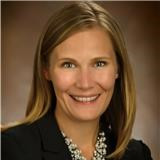Hoosier Energy’s Michelle Lynch attended her first in-person PLMA (Peak Load Management Alliance) Conference just two years ago in Baltimore. It was the first post-COVID event for the member-led nonprofit organization.
A subset of PLMA is another member of the alphabet soup family, ULME (Utility Load Management Exchange). While PLMA is made up of nearly 200 utilities, technology companies, energy/energy solution providers, equipment manufacturers, consultants, researchers and academic organizations, ULME is for utilities only.
Originally formed as the Advanced Load Control Alliance (ALCA), meeting twice a year since 2003, the group changed its name to ULME in 2015 while also deciding on a more structured form of governance. That consisted of an elected Steering Committee made up of four people.
When Lynch was approached with the idea to run for one of those four spots last year, she was up for the task.

Michelle Lynch
“I was really excited about it,” Hoosier Energy’s Senior Market Value Strategy Analyst said. “I did have an opponent for the election, but what I brought to the table was being a voice representing interests beyond extremely large investor-owned utilities.”
Lynch won the election last November in Charlotte, giving Hoosier Energy a seat at the table with some notable company.
Her three co-chairs are from National Grid, which delivers electricity to over 20 million people in the United Kingdom and serve 20 million more people with electricity and natural gas networks in New York and Massachusetts; Xcel Energy which serves 3.4 million electricity customers and 1.9 million natural gas customers in eight states; and Pacific Gas and Electric (PG&E) which provides natural gas and electric service to approximately 15 million people throughout a 70,000-square-mile service area in northern and central California.
“I’m serving in this role with some really large utilities,” Lynch said. “These are some utilities with millions of users. Because Hoosier Energy is a member cooperative with unique demographics, we look at things a little bit different and in some ways have more opportunities.”
With a three-year term, Lynch will be bringing Hoosier Energy’s perspective to the table plenty in the future. As load management continues to play a big role in utilities’ work, she already knows a little bit of what to expect.
“Some things we’re really focused on with ULME is sharing best practices as well as lessons learned when there’s a problem,” Lynch said. “That’s as important as anything. We hear a lot of pain points utilities are having but also celebrate some of the more cutting-edge things people are doing.”
The last conference featured a presentation from Hydro Quebec out of Canada talking about major problems caused by a winter storm and how they navigated that emergency as well as a presentation from PG&E on DERMS (Distributed Energy Resource Management Systems).
“We get to dive very deep into some of these topics,” Lynch said. “One of my favorite parts of the job is all the collaboration. I come back from that conference so energized.”